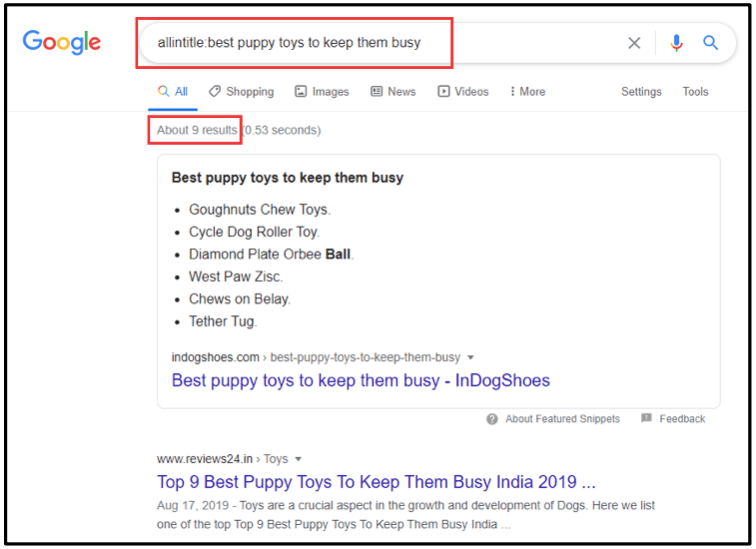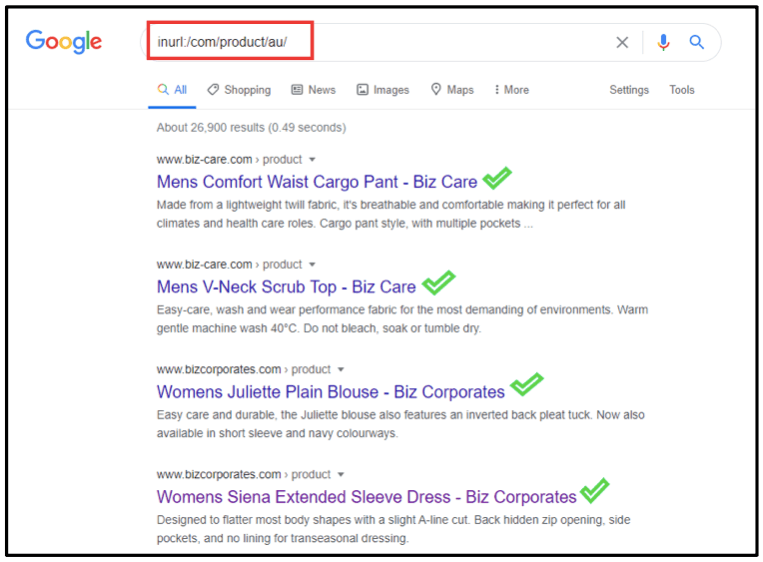It’s no wonder that SEOs chase Google rankings when they get an SEO client. Afterall the platform occupies the largest pie of search engine market share. That’s why there are hardly any “Bing SEO Guide OR Yahoo SEO Guide OR DuckDuckGo SEO Guide”
Getting to rank a website on Google for competitive search terms can result in good ROI for the client.
And if the client is getting a good return on investment that means you get to extend the contract and keep that client for long, maybe forever.
To stand apart in SEO you can’t just rely upon a basic SEO checklist and hope to get outstanding results.
SEO is the type of digital marketing plan in which there are many strategies to accomplish one single goal. There is no manual that you can follow to get results. You have to learn from your mistakes as well as other’s mistakes to perfect your strategy.
And it’s lying out there buried under the SERP for you to exploit.
You need to heavily invest in competitor research. There are many angles to the competitor research. This is the fun part of the Digital Marketing industry that the data is lying dormant for us marketers to utilize and make smart decisions.
What we are gonna cover today is how you can leverage Google Advanced Search Operators with competitors or industry research. It can help you uncover a lot of data.
Table of Contents
What is Google Advanced Search Operators?
Google Advanced Search Operators are special commands & search codes that let you see refined search results.
It helps a great deal with content research, industry research, and basically just keeping up with the trend.
Top Google Search Operators List
Here are the Google Search Operators I use the most
- intitle:keyphrase it could be in phrase or no phrase depending on whether you are looking for an exact match
- allintitle:keyphrase to get all those keywords in a keyphrase in the search results
- inurl:keyword or subdirectory paths
- intext:keyphrase
- allintext:keyphrase
How can Google Search Operators help with SEO Competitor or Industry Research?
The number 1 way to perfect & refine your SEO strategy is research.
“All I'm armed with is research.” – Mike Wallace
Invest in research before you enter the battlefield. Google Search Operators will help with research in every aspect.
Google Advanced Search Operators can help with understanding the kind of results that dominates the SERP.
Let’s go with examples to understand it deeply
1. intitle: find results with keywords in the title
intitle:keyphrase reflects search results containing some keywords from keyphrase and also all keywords from keyphrase
You can use intitle: Google Search Operator when you want a general idea about the topic or content. Also when you want some inspiration for your own title tag.
You can glean into a wide pool of title ideas from search results.
Let’s see it into action
Let’s say you have created an article on the topic “how to lose belly fat” and you’re looking for a spectacular title. Here is how you research with Google Search Operator intitle

With intitle search, we have found interesting titles like the ones I have highlighted.
Interesting keywords & phrases like
“Stubborn belly fat”
“How to lose belly fat in just 7 days” (guarantees action)
“Tips for a flatter stomach”
What’s interesting here is two things
- Some of the keyphrases themselves also have search volume along with the main seed keyword i.e “How to Lose Belly Fat”; “Tips for flatter stomach” for example has a search volume of 100-1K alone and it has been used along with the seed keyphrase i.e “how to lose belly fat” so now the article can be optimized for both the search terms at once.
- You’re getting different title ideas that make the article appear exciting. It’s well known how important an on page SEO element title tag is. If you choose a title tag that is catchy, then that can dramatically increase the CTR and improve your ranking position.
2. allintitle: find results with the entire search term in the title
allintitle Google search operator is super useful for quantitative research. With this advanced search operator, you can find exactly how many sites have published a web page having all the keywords from your keyphrase in the title tag. It helps a great deal with determining the potential competition that you face.
Let’s see it in action
Let’s suppose you researched a topic for your blog, before finalizing it you want to see the potential competition that you face.
Maybe you also want to see what’s the KGR (keyword golden ratio) of your topic
KGR = No of search results/search volume of the topic

There are only 9 bloggers who have published content on this exact match.
And get this, the topic i.e “best puppy toys to keep them busy” has 250 monthly search volume so that brings our KGR ratio to 0.036 anything below <1 is awesome. You can rank really soon.
This Google Search Operator helps with content blogging research & also e-commerce SEO research.
Before you begin implementing on page meta tags on the e-commerce website you can see first hand the competition you face and from what kind of authority sites.
See this beforehand can hint you to divert the strategy by adopting long tail low competition keywords instead.
For example, instead of going with Blue Shoes you might choose to go with Men’s Blue Shoes With Spikes. Now that’s gonna be easier to rank. This is hypothetical by the way I haven’t checked the search volume, this is an example.
3. allinurl: Find URLs in the SERP with all the keywords
inurl is a search parameter to specifically find keywords in the URLs of search results. It helps with refining the data and seeing only what you want to see.
You can use this parameter for quick research so that you can narrow down data and find exactly what you want to find.
For example: Let’s say you want to implement international SEO for your website that is an eCommerce site.
Now there are 3 ways for you to adopt international SEO
- Subdirectory i.e (.com/us/en-us)
- ccTLD i.e (co.uk / com.au)
- Subdomain i.e (us.domain.com)
Now obviously one size doesn’t fit all. The type of international SEO URL structure that you’re gonna use differs from industry to industry.
For example, eCommerce sites going international usually choose a subdomain, a content website may choose subdirectory, and subdomains are often used by SaaS providers or software providers.
To arrive at a decision you need to see quantitative data so that you can find some correlation between usage and SEO results.
With inurl/allinurl you can find extract this data effortlessly
Let’s suppose you are a B2C eCommerce website and you want to go international so now let’s see what the data suggests.

In this example, we saw how many “energy drink” selling Shopify eCommerce sites are using ccTLD (top level domain) for international SEO
Note: Some of them might not even be international; they may just be in Australia.
What you can do next is scan these green check domains on SEMrush and see how they are performing.
Now let’s take a look at Subdirectory path strategy

Again you can, open these search results and analyze the kind of sites these are and see their performance on SEMrush.
Some more advanced search parameters
By now we have seen how you can add text in front of Google Search Operator and find data.
But there is one more way to furthermore refine the data. You can make exclusions to get more refined data.
For example, you are searching for a topic that you know domains like Pinterest & YouTube clutter the SERP for those searches you can exclude a domain from search results altogether
Let’s see this in action

In fact, you can use this tactic to see what others are talking about your website and your competitor’s website
By using this search parameter domain name -site:domain.com
These are just a few examples of what you can accomplish with Google Advanced Search Operators. Now it’s up to you how you can use these shortcuts to immediately find useful data, find correlations to make data-driven decisions.
Before you go about implementing an SEO strategy make sure that you take a good look at the data and make decisions that validate the data.





6 Comments
Another amazing post on your website for SEOs. Thanks for this informative post.
I was looking for the post, thanx for your sharing the post, Great Work
thanks for sharing this valuable information. i was looking for it.
Great work.
Thanks, Apurva!
this is nice post and alsoknowlegable. good work.
Thanks a lot! I’m glad that this article provided you some value.